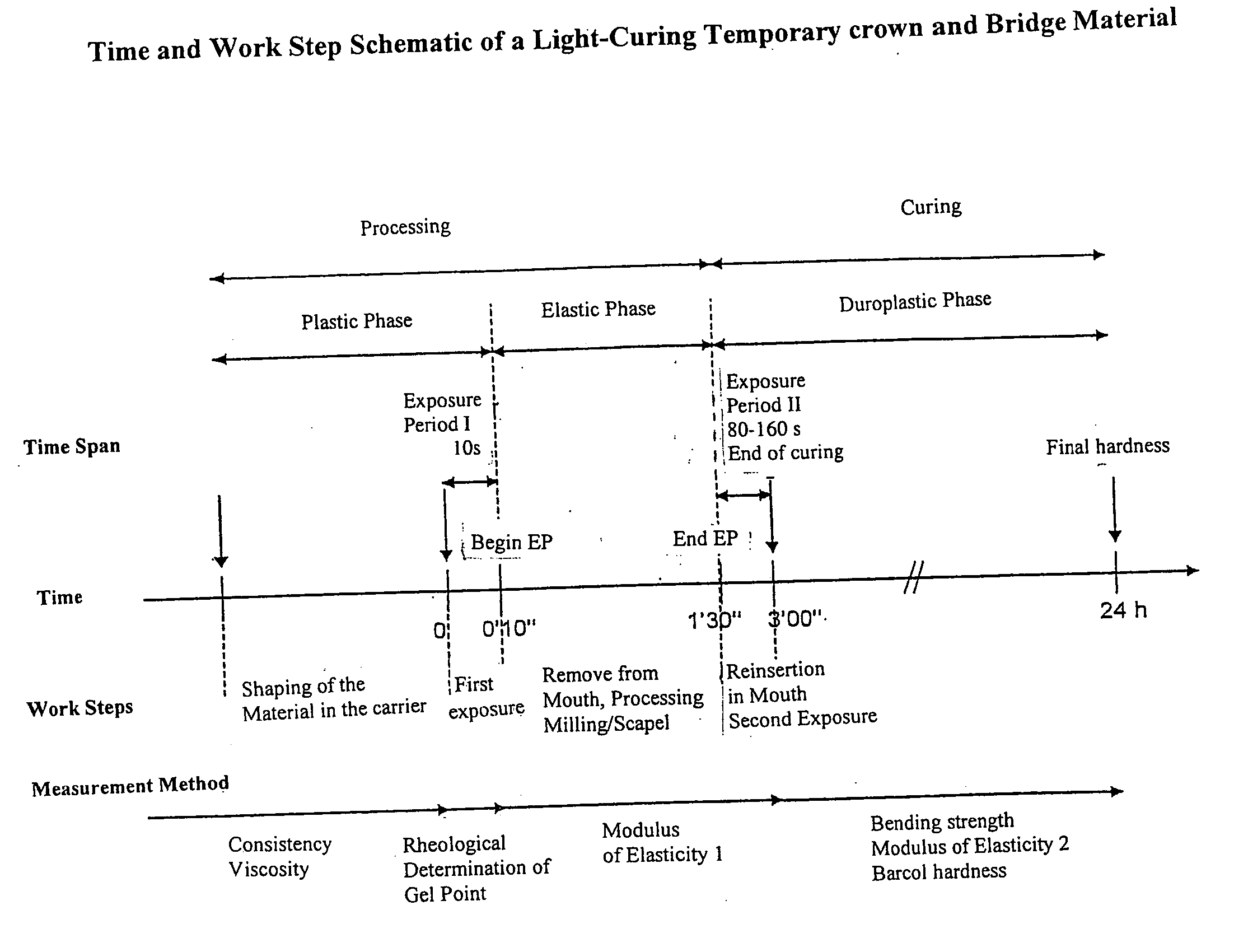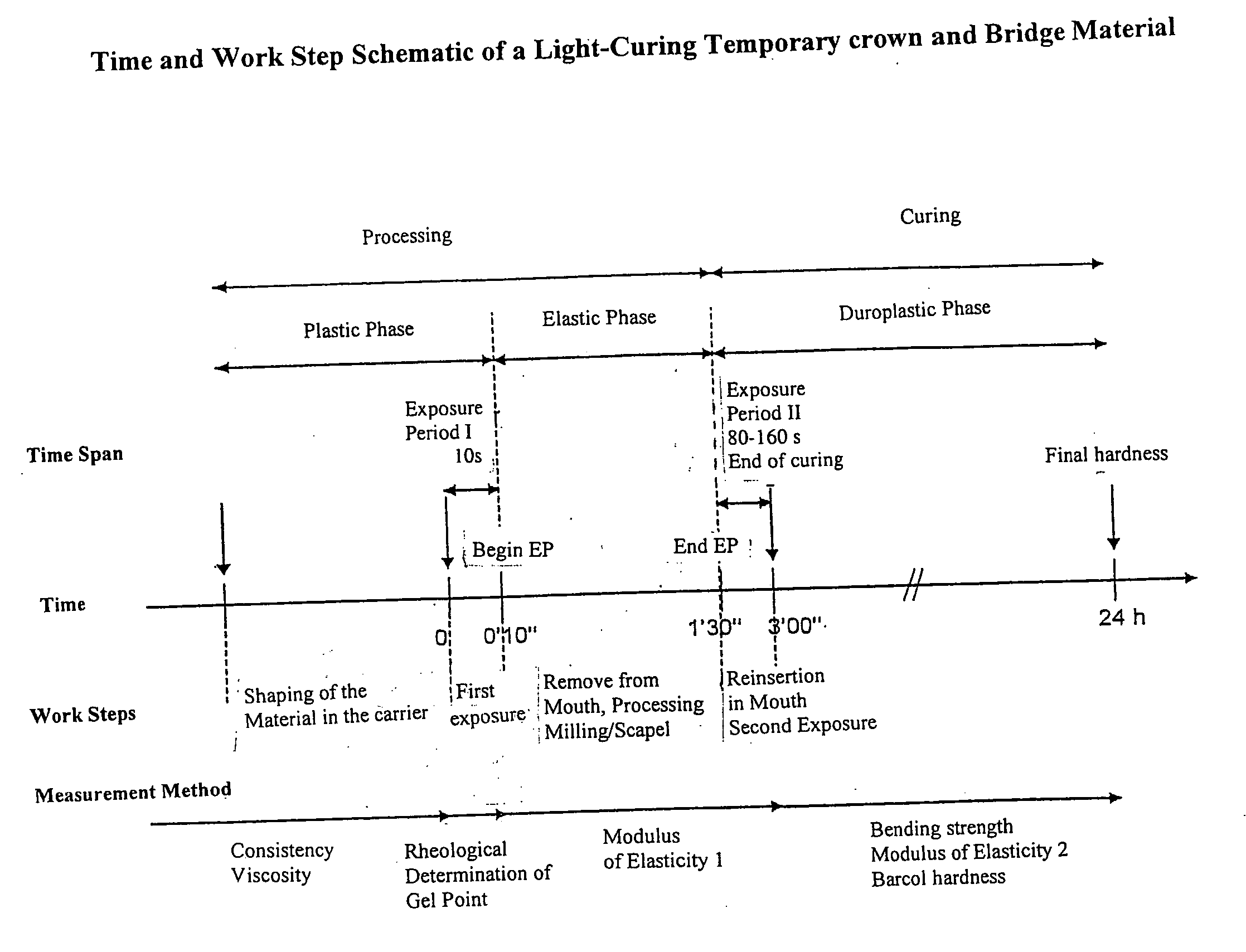Set for producing a temporary tooth crown or bridge
a technology for teeth and crowns, applied in the field of teeth caps, impression caps, dental surgery, etc., can solve the problems of reducing the quality of teeth, increasing treatment time, and reducing the accuracy of teeth, and achieve the effect of good reproduction of the original tooth situation and great fit accuracy
- Summary
- Abstract
- Description
- Claims
- Application Information
AI Technical Summary
Benefits of technology
Problems solved by technology
Method used
Image
Examples
example 1
[0040] The patient has a tooth gap in the side tooth region of the right upper jaw, which is supposed to be closed with a bridge. For this purpose, the hard tooth substance of the teeth that delimit the gap must first be worn away, to accommodate the bridge columns, according to dental guidelines (preparation).
[0041] Before preparation, an impression of the teeth is taken, using a transparent impression material that was filled into a transparent impression tray (e.g. Vita® single-use impression tray), so that the impression forms a carrier. In this way, the original outer contour of the teeth has been recorded. To connect the two impressions, a crosspiece between the two bridge columns, made of the impression material, can be cut out.
[0042] After preparation, the impressions of the prepared teeth and the crosspiece that was cut out are filled, in the impression, with the plastically deformable, flowable, and light-curing single-component material, and the impression is put back i...
example 2
[0045] The patient has a deeply destroyed tooth in the left lower jaw, the outer contour of which is still more or less maintained with a filling, and which is supposed to be provided with a crown. Here again, preparation of the tooth is necessary. Before the preparation, an impression of the existing contour of the tooth is taken, using a transparent thermoplastic film. For this purpose, the film, which has been brought to a plastically deformable state by means of heating it above its softening temperature, is molded onto the tooth either manually or using a kneadable material. After the film has cooled to below its softening temperature, the film is now removed from the mouth and the kneadable material is removed from the film, if applicable. The film shaped in this manner now serves as a carrier for shaping the temporary crown.
[0046] The other work steps are not directly comparable to Example 1, whereby in this case, of course, no crosspiece is present.
PUM
| Property | Measurement | Unit |
|---|---|---|
| Temperature | aaaaa | aaaaa |
| Temperature | aaaaa | aaaaa |
| Temperature | aaaaa | aaaaa |
Abstract
Description
Claims
Application Information
 Login to View More
Login to View More - R&D
- Intellectual Property
- Life Sciences
- Materials
- Tech Scout
- Unparalleled Data Quality
- Higher Quality Content
- 60% Fewer Hallucinations
Browse by: Latest US Patents, China's latest patents, Technical Efficacy Thesaurus, Application Domain, Technology Topic, Popular Technical Reports.
© 2025 PatSnap. All rights reserved.Legal|Privacy policy|Modern Slavery Act Transparency Statement|Sitemap|About US| Contact US: help@patsnap.com


